Meet Soham Patil | Graphic Designer, Photographer and Architect

We had the good fortune of connecting with Soham Patil and we’ve shared our conversation below.
Hi Soham, what led you to pursuing a creative path professionally?
I’ve always been captivated by the creative spark that ignites when form, function, and senses intertwine. My journey into the realm of design began early, nurtured by a profound admiration for architects like Louis Kahn, B. V. Doshi, and Le Corbusier. Their structures transcended mere buildings; they resonated with me as symphonies in concrete and steel, each line and curve weaving a narrative. And then, there was the Bauhaus moment! While browsing through a secondhand bookstore, I stumbled upon a worn-out Bauhaus school of design book, its spine barely holding together and its cover faded from countless hands and curious eyes. The book, titled “Bauhaus 1919-1933” by Magdalena Droste, instantly captivated me. Within its pages, I found an anthology of design philosophy, a bold experiment that dismantled the boundaries between fine art and design. Every line and shape imbued with purpose, embodying the Bauhaus philosophy and its unwavering dedication to functionality without compromising aesthetics. This guiding principle has shaped my journey ever since.
I started my career in architecture, influenced by the ideals of Louis Kahn, B. V. Doshi, and Le Corbusier. They taught me that design isn’t about trends but about timeless solutions. Architecture was my passion, but the immediacy of graphic design kept calling to me.
My path took a sharp turn when I was inspired by the expressive power of street photography. Through the lens of a camera, I discovered my true creative expression—a form of art that taught me how to frame the world, capture fleeting moments, and tell stories without words. Street photography, in particular, became my first design teacher. I was captivated by the raw, evocative work of Tish Murtha. Her images could tell entire stories with just a single frame. Her ability to highlight both beauty and grit influenced my approach to capturing human emotions and experiences. Street scenes taught me to appreciate negative space, contrast, and the significance of every element in a frame—lessons that seamlessly translated into graphic design.
As I explored typography and layouts, I realized how much my eye for photography guided me. In design, I approached projects like a photo composition. The same principles applied: balance, contrast, focus. I started thinking of design as “capturing” a story, framing a message with the same intentionality I had used behind the camera. Photography showed me the power of simplicity the way a single strong image can convey more than a clutter of details. This philosophy informs every logo, layout, or brand system I create.
When I arrived at the Maryland Institute College of Art (MICA), my understanding of design deepened and expanded. MICA became a vibrant melting pot of ideas and influences, where I discovered Ellen Lupton’s teachings on typography and design principles. Her work opened my eyes to new dimensions of storytelling, making me appreciate every intricate detail—every curve, every serif, every deliberate inch of white space. Jennifer Cole Phillips, Jeff Glendenning and Andrew Walters, helped me bridge the gap between my architectural background and the intricacies of graphic design. They taught me how to blend structure with fluidity, creativity, logic with empathy.
Through these experiences, I realized that design isn’t just about creating something visually appealing; it’s about creating something meaningful. Inspired by Hilma af Klint’s abstract works that reveal the unseen, I strive to make designs that resonate, inviting people to explore new layers of understanding.
Today, my designs reflect a fusion of various influences—the simplicity of Bauhaus, the honesty of street photography, the mystique of Hilma af Klint, and the expansive, ever-evolving nature of design. It’s been a journey of exploration, unlearning, learning, and blending, and that’s what makes my creative path endlessly inspiring.
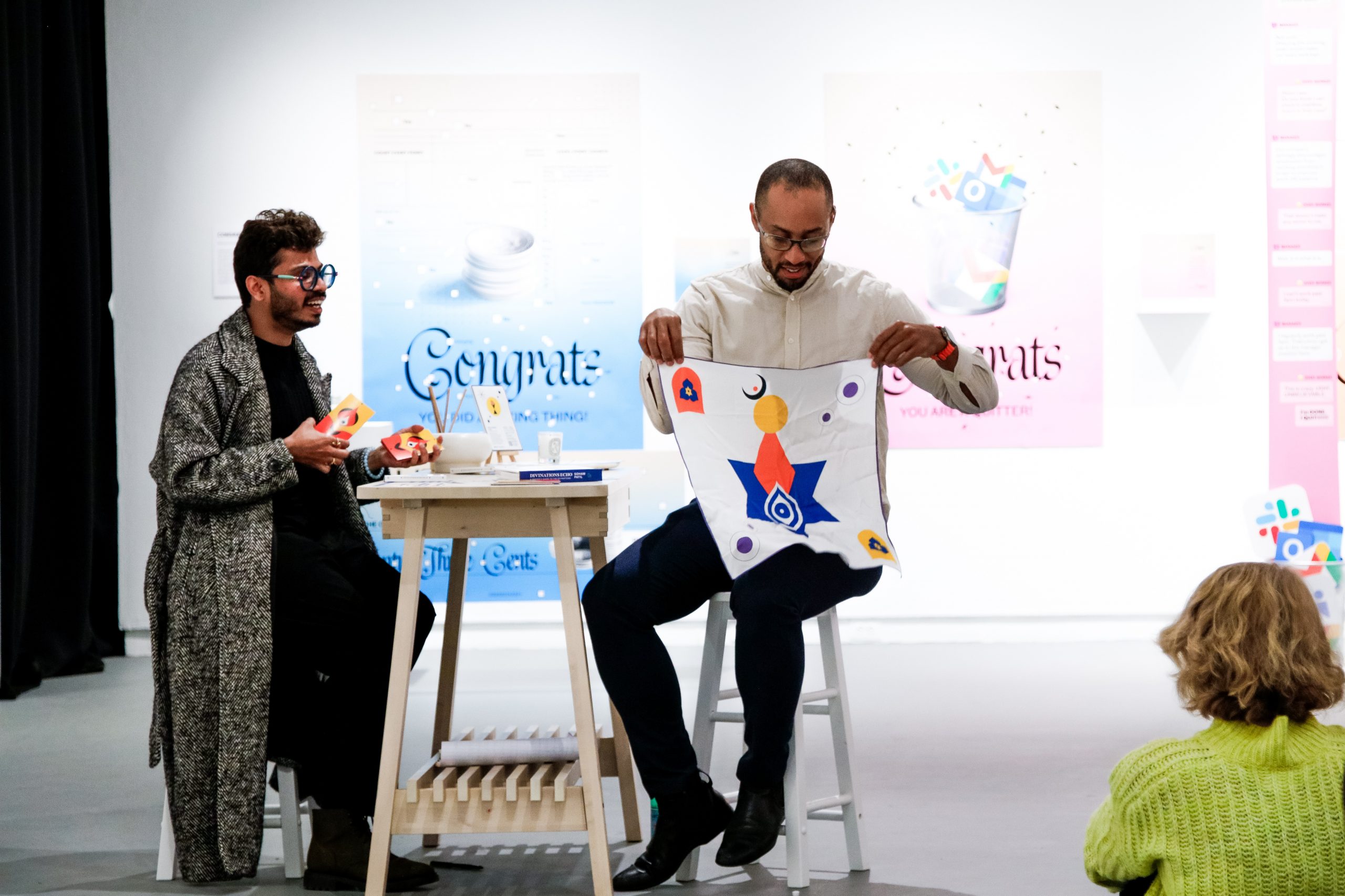
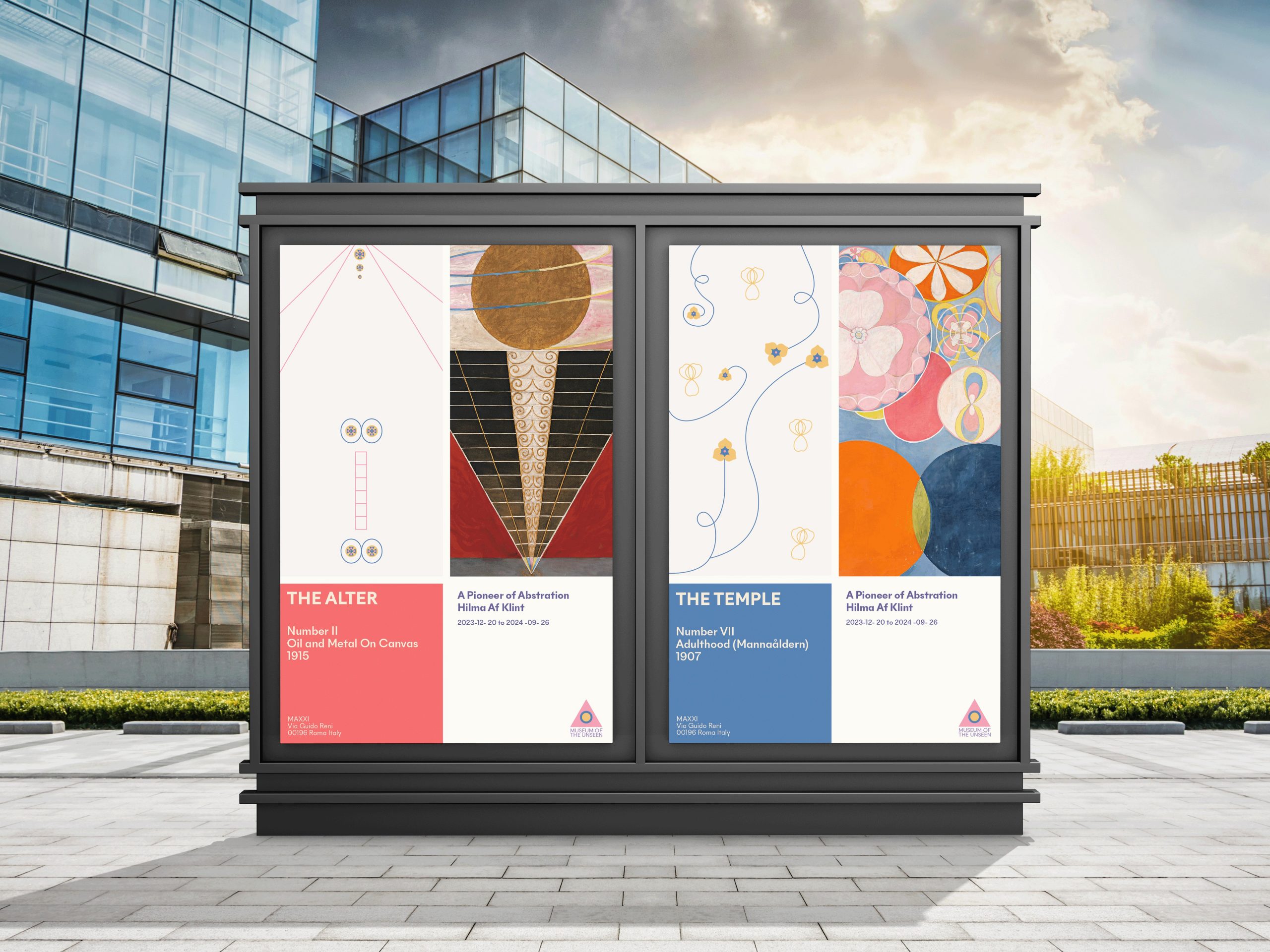
Let’s talk shop? Tell us more about your career, what can you share with our community?
My design language is rooted in the idea of bridging worlds — blending architecture, design, and human emotions into visuals that communicate deeply and authentically. What sets my work apart is the way I weave together design, art and the spiritual. My background in architecture has given me an eye for clean lines, purposeful layouts, and harmonious compositions. But I’m also drawn to the mystery of abstraction, the allure of light and shadow, simple shapes, minimal colors and the raw honesty of street photography. So, I aim to create designs that feel like they have a pulse, that balance discipline with emotion.
My thesis, Divinations Echo, was a deeply personal exploration into the intersections of my philosophy in design, art, architecture and spirituality. It stemmed from a desire to create a visual language that could transcend traditional storytelling and engage viewers on a subconscious, almost spiritual level. The core of Divination’s Echo was built on abstraction, a design approach that allowed me to strip away literal representation and reach the essence of emotion, space, and familiarity with the unfamiliar. Abstraction gave me the freedom to play with form, texture and color, using them as tools to evoke rather than to define. In each piece, I combined architectural elements with fluid, organic shapes, a nod to the balance between the built environment and the intangible realms around us. Spirituality played a crucial role in the process as well. Inspired by Hilma af Klint’s approach to art as a channel for the unseen, I saw Divinations Echo as an attempt to capture the “echo” of spaces and realms around us that leave a lasting impact on the soul. Divinations Echo wasn’t just a project; it was a journey to develop a design language that lives beyond the page or screen by connecting with the seen and unseen, the remembered, and the felt. In many ways, it’s a continuation of the Bauhaus legacy — a commitment to creating art that is both timeless and transformative, bridging the material and spiritual worlds through design.
The journey here hasn’t been easy, but every challenge has taught me something invaluable. When I transitioned from architecture to graphic design, there was a steep learning curve. I was entering a new world that demanded not just a different skill set, but a different way of thinking. I struggled to let go of the rigidity of architectural design and embrace the fluidity and abstraction of graphic design. But my mentors at MICA, especially Ellen Lupton, taught me to view typography, layout, and color as forms of architecture themselves — tools to build messages, not just buildings. That shift in perspective helped me blend my past and present, making my design unique.
One of my proudest achievements is how my work has impacted clients and brands. Through strategic design, I’ve been able to increase engagement, reduce turnaround time, and lead projects that resonate with people. For me, that’s the most fulfilling part — seeing how design can transform not only a brand but also the way people connect with it. I want my designs to be more than just visuals. I want them to spark conversations, evoke emotions, and inspire new ways of seeing.
If there’s one lesson that stands out, it’s this: embrace your influences, but don’t lose your voice. I’ve been deeply inspired by creative gurus like Louis Kahn, László Moholy-Nagy, Hilma af Klint, and Edward Kelly, but I’ve learned to integrate their philosophies with mine. It’s a delicate balance, one I’ve honed through persistence, resilience, and a commitment to self-discovery.
What I want the world to know about my work is that it’s a conversation between art and purpose, between the head and the heart. It isn’t just about creating beautiful visuals but it’s about building something meaningful that is rooted in timeless principles yet alive with modern relevance. Through my design, I aim to leave a lasting impression, one that echoes the dedication, challenges, and stories that have shaped my journey.
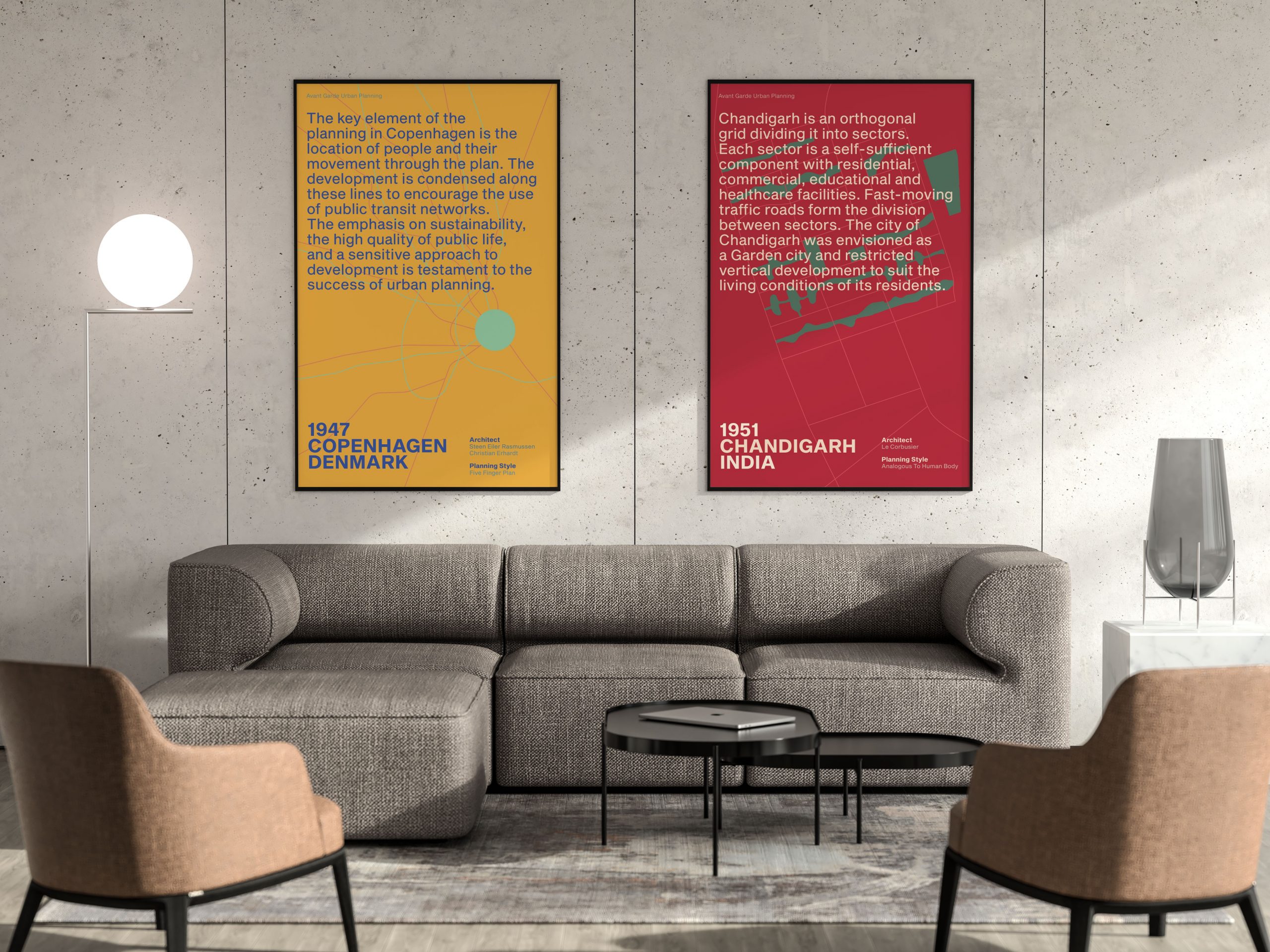
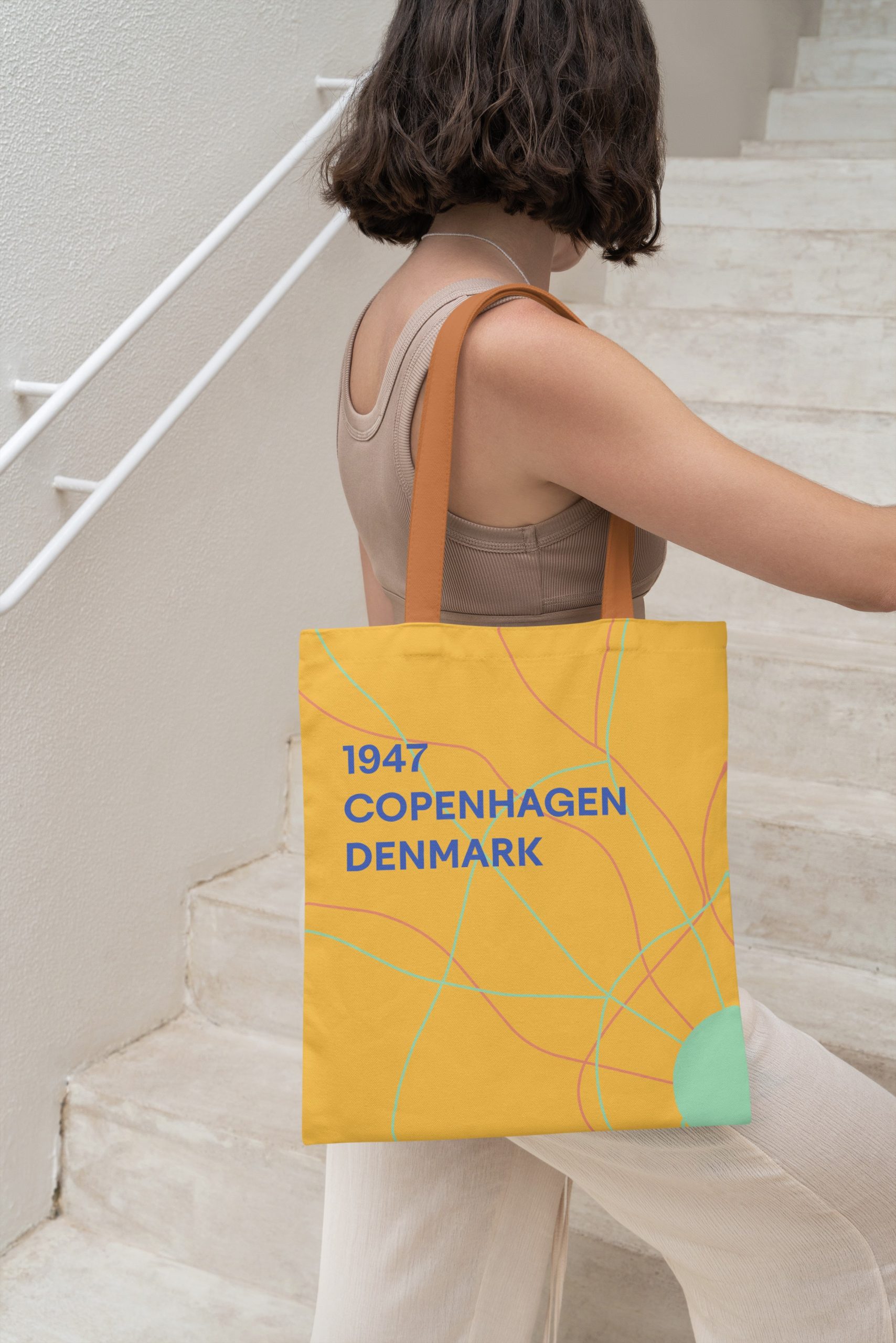
Let’s say your best friend was visiting the area and you wanted to show them the best time ever. Where would you take them? Give us a little itinerary – say it was a week long trip, where would you eat, drink, visit, hang out, etc.
If my best friend visited Washington, D.C. were I am currently based, I’d curate an itinerary that blends the city’s history, art, culinary scene, and vibrant culture. We’d start with classic sights and iconic monuments, followed by Georgetown Cupcake for a sweet treat and Blue Bottle Cafe for coffee. We’d indulge in unique dining experiences, from SHŌTŌ, an elegant Japanese restaurant that transforms into a speakeasy club on weekends. Museums would be a key part of the itinerary, with stops at the National Gallery of Art and the Smithsonian, plus a day trip to Glenstone Museum, where art and nature blend into an immersive experience. This blend of art, history, and luxury would showcase D.C.’s diverse offerings, making each day of the week a new adventure and a memorable glimpse into the city’s soul.
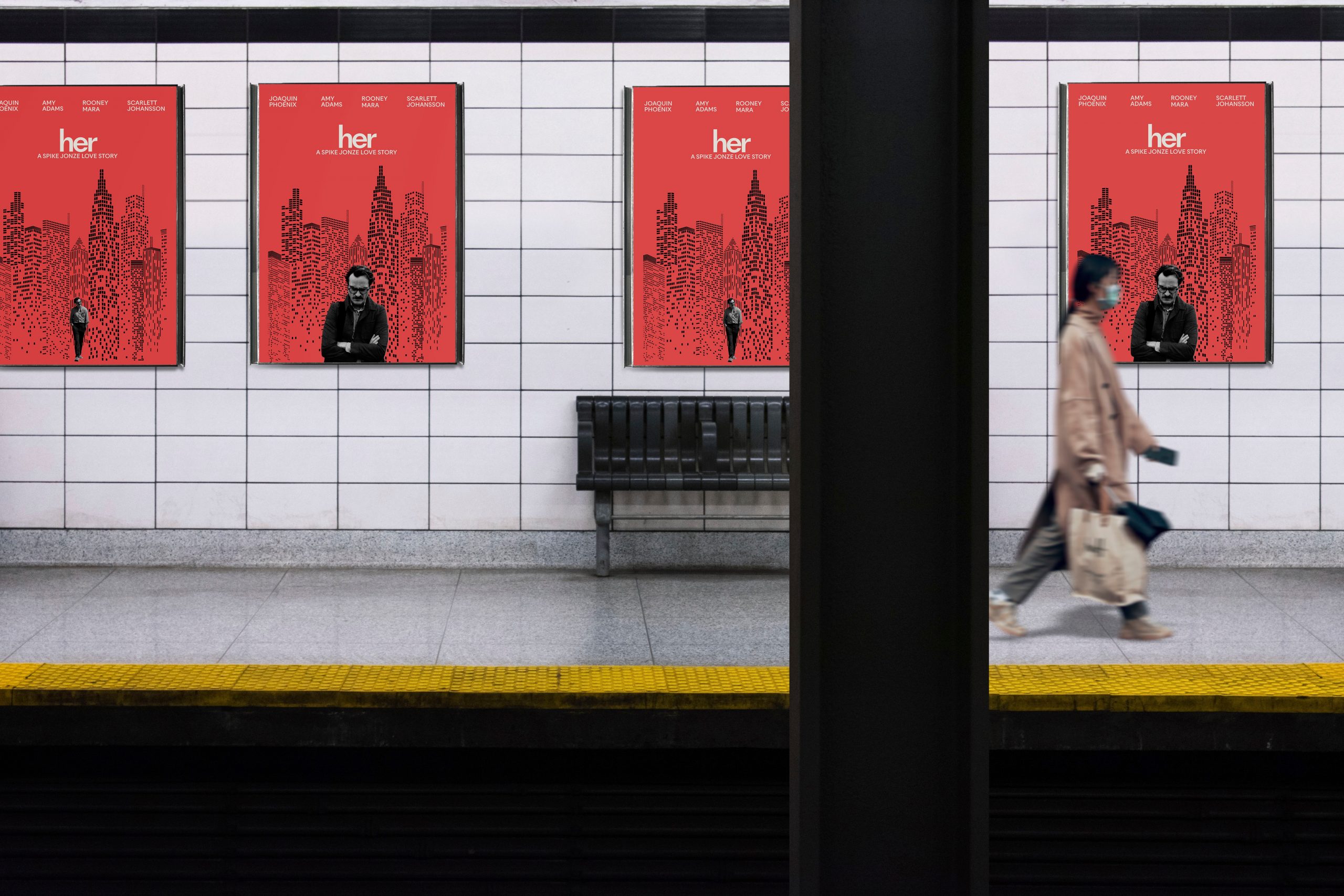
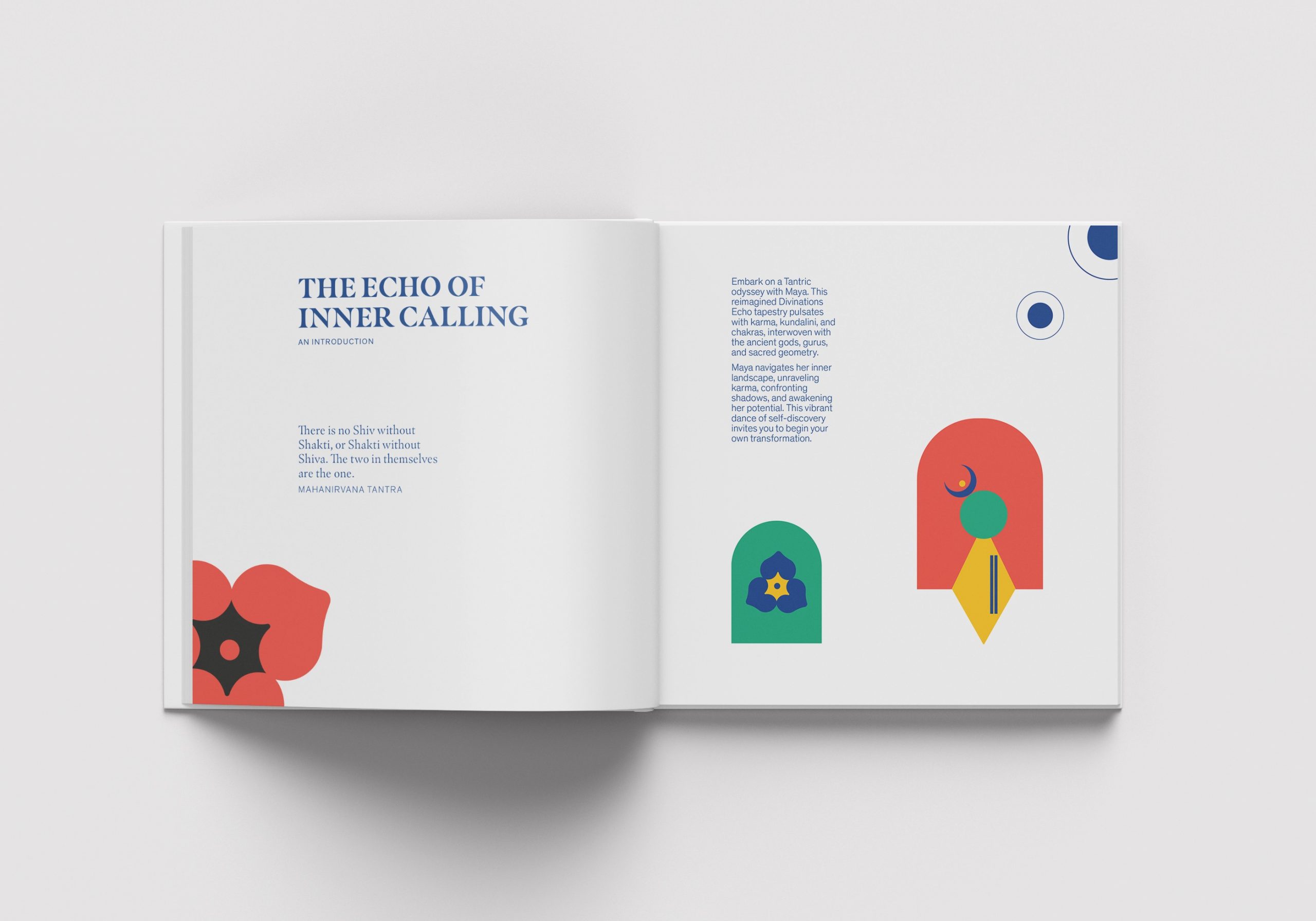
The Shoutout series is all about recognizing that our success and where we are in life is at least somewhat thanks to the efforts, support, mentorship, love and encouragement of others. So is there someone that you want to dedicate your shoutout to?
First, my family and friends, who has always been my foundation of support, instilling in me the confidence to pursue an unconventional path in art and design. Their encouragement allowed me to see creativity as a valid and valuable pursuit, and I am forever grateful for that.
In my professional journey, I owe a huge debt to my mentors at MICA. Ellen Lupton was one of the most pivotal influences on my approach to graphic design. Her guidance helped me understand how typography and visual hierarchy are essential to storytelling, and her insights gave me the tools to communicate effectively through design. My time at MICA was also enriched by incredible mentors like Jennifer Cole Phillips and Jeff Glendenning and Andrew Walters, who taught me to blend art and design seamlessly and pushed me to find my voice as a designer. They saw potential in my work that I hadn’t yet realized, and their mentorship transformed not only my skills but also my confidence.
Another significant influence has been the Bauhaus movement, which first captured my fascination with design. Discovering the work of László Moholy-Nagy and the Bauhaus principles of form and function fundamentally reshaped my understanding of design, merging beauty with purpose.
Hilma af Klint, too, has had a profound impact on my creative journey. Her mystical, abstract works taught me that design and art can be deeply spiritual, resonating with the subconscious in powerful ways. Her dedication to expressing hidden layers of reality continues to inspire me to dig deeper, to strive for designs that resonate on levels beyond the visible.
And then there’s Edward Kelly, whose mesmerizing exploration of color, light, and minimalism revealed the potency of simplicity in art. His work taught me how essential it is to pare down elements to their core essence, creating spaces within designs that allow viewers to feel a sense of calm, curiosity, or contemplation. Kelly’s art underscores the idea that sometimes, less truly is more, an insight that’s become fundamental in my design approach.
Each of these influences—from family, mentors, and inspiring artists like Hilma af Klint and Edward Kelly, to timeless books—has contributed a vital piece to my career. Their encouragement, teachings, and legacies have been the threads holding my journey together, and I am endlessly grateful for the role they’ve played in helping me become the designer I am today.
Website: https://www.sohampatil.co
Instagram: https://www.instagram.com/sohampatil_5/
Linkedin: https://www.linkedin.com/in/sohampatil-newyork/
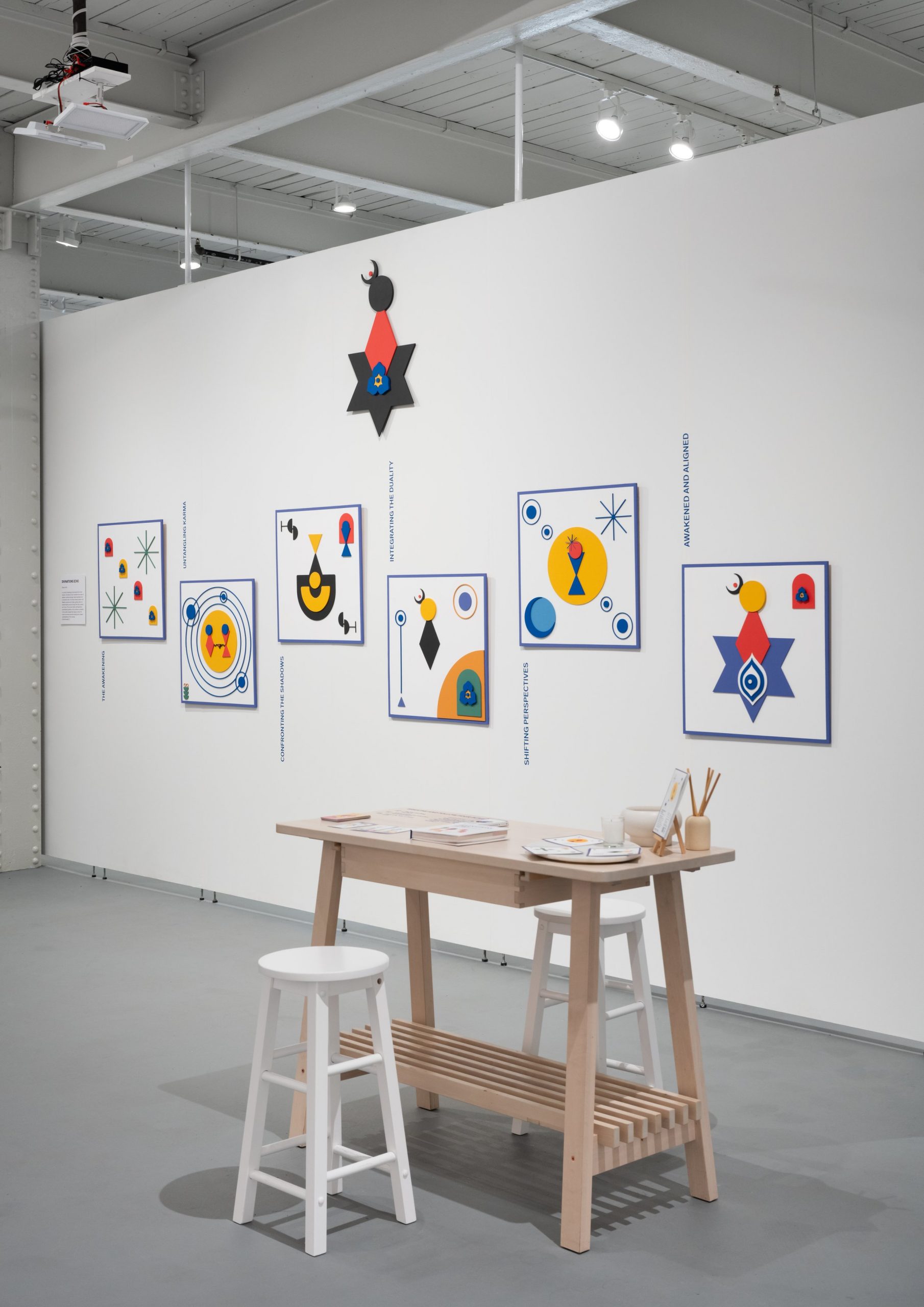
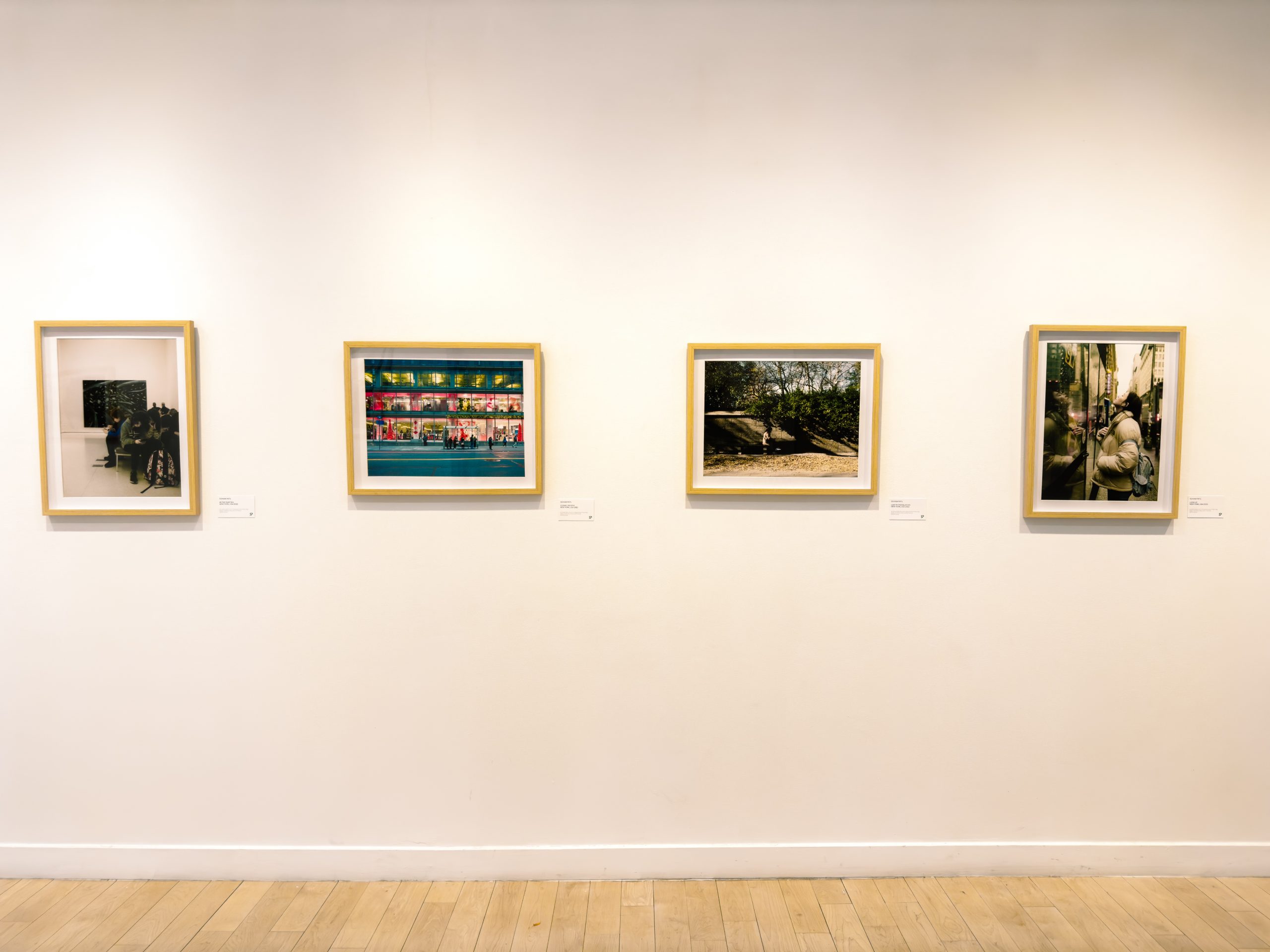
Image Credits
Soham Patil
